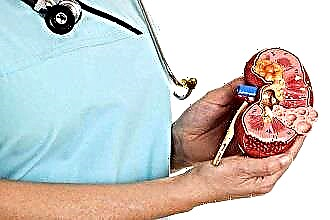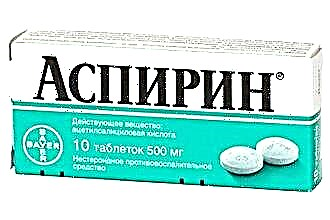Unfortunately, angina in infants is a fairly common diagnosis, because children at this age do not yet have sufficient immunity in order to overcome the infection. The situation is further complicated by the fact that a child under the age of one year cannot explain what exactly hurts him. And the sore throat itself can have serious consequences, including hearing loss for life. Sometimes a sore throat can be confused with a disease such as tonsillitis - here a competent specialist will help to establish an accurate diagnosis.
How to treat a sore throat in a newborn?
 As a rule, a newborn does not know exactly how to react to a severe sore throat. Therefore, he begins to cry a lot and refuse the food that he used to like. It comes to the point that the child begins to completely refuse food, up to breast milk. In this case, it becomes clear that something is bothering him. By the way, angina in such children can occur not only in winter, but also in summer.
As a rule, a newborn does not know exactly how to react to a severe sore throat. Therefore, he begins to cry a lot and refuse the food that he used to like. It comes to the point that the child begins to completely refuse food, up to breast milk. In this case, it becomes clear that something is bothering him. By the way, angina in such children can occur not only in winter, but also in summer.
So, what are the symptoms that may accompany the disease? How to recognize it and start treating it on time? Symptoms may include the following:
- The temperature, and, as a rule, is very high, from 38 and above.
- Decreased appetite or complete refusal to eat.
- Excessive fussiness.
Treatment for angina is based on antibiotics. It is the drugs of this group that not only reduce the risk of complications, but also relieve symptoms in the form of severe sore throat and high fever.
The drug of choice from the group of antibiotics is Penicillin. It is at the same time quite safe and inexpensive, so every parent can afford to purchase it for their child. Such a drug can be prescribed in the form of tablets, but most often children under one year old are prescribed it in the form of intramuscular injections.
By the way, if you are allergic to penicillin, you can choose another drug - for example, Amoxicillin. It comes in the form of a baby syrup that children love to try. By the way, the baby ceases to be contagious a day after he has taken the antibiotic.
Angina in children under one year old is a disease that requires an integrated approach: there are additional methods that can alleviate the child's condition. One such method is drinking plenty of fluids, which can both soften the throat and provide temporary relief. However, it should be borne in mind that the treatment requires a warm drink, therefore, before giving it to the child, milk formula or water should be warmed up.
During illness, water should be offered to the child constantly, but not insist on using it. Since during a sore throat, he practically refuses any food, including liquid, drinking plenty of fluids will help to avoid dehydration during illness.
Older children can be offered tea with lemon or rosehip broth. However, it should be remembered that the drink should not be hot, but warm.
 Another effective way to relieve a sore throat is to turn on a moisturizer, as dry air can cause irritation and sore throat. This will help the newborn relax and get some sleep.
Another effective way to relieve a sore throat is to turn on a moisturizer, as dry air can cause irritation and sore throat. This will help the newborn relax and get some sleep.
Proven remedies that help with angina in infants can be as follows:
- Many people recommend adding honey to tea, but it is unsafe for babies, as it can cause an allergic reaction. Therefore, it is best to replace it with rosehip broth, or at least make tea with lemon.
- Drinking abundantly often is not always tea or herbs. Almost any warm liquid can be used, including chicken broth or warmed apple juice.
With the help of such methods, you can alleviate the symptoms of sore throat and help the child get through the not happiest days for him. Treatment will give him the opportunity to rest and recover faster.
Inhalation therapy
Currently, nebulizer treatment is very popular - the device makes it possible to treat effectively and safely, in a short time and practically without side effects.
Unfortunately, children are not always able to sit near the nebulizer even for five minutes. Therefore, here you should be smart and come up with a way that can distract the child. By the way, a baby can breathe through a special nipple-attachment, which is often included in the equipment set.
So, how to properly carry out nebulizer treatment for angina?
- To begin with, you should prepare all the equipment intended for inhalation. It is very important that all tubing and nozzles are clean and do not serve as an additional carrier of infection.
- Prepare something that can distract the child - perhaps it will be baby pictures, or his favorite toy. After you sit in a chair with an inhaler, let your child examine the atomizer, study it. In the future, this will eliminate the infant's fear of the nebulizer.
- Turn on the nebulizer and then slide the mask with the nebulizer cup towards the baby's mouth. Try to calm him down, make it clear that he is not in danger. Wait for the time prescribed by your doctor.
- In order for the infant not to be frightened by the nebulizer, you can use other methods, for example, swing it or sing a lullaby.
 Many children are intimidated by loud noise from equipment. In this case, the nebulizer can be placed on a thick terry towel to absorb the sound.
Many children are intimidated by loud noise from equipment. In this case, the nebulizer can be placed on a thick terry towel to absorb the sound.
Or, if the handset of the device allows it, you can move the device as far as possible. If this does not help, then you can purchase an ultrasonic model, which is much quieter than compressor equipment. As a rule, the inhalation time takes from five to ten minutes. Steam inhalations can also be used, but they are generally suitable for older children and poorly applicable to infants.
In addition, inhalation over steam can cause damage to the mucous membrane, and if you inhale the medicine from a nebulizer, you will not. I am glad that the device of this type can be useful not only for angina, but also for many other diseases.
The nebulizer can be useful for you with bronchitis, tonsillitis, pneumonia, and it is especially effective for bronchial asthma.
Why can sore throat occur in infants?
As mentioned earlier, angina in infants is not a rare occurrence that can be triggered by various diseases. Moreover, as statistics show, about 80% of all children under one year old have had a sore throat at least once. Such a large percentage is due to the fact that the child's immunity has not yet fully matured, and up to a year it is still developing.
In fact, the immune system of a child under one year old is so weak that additional glands, referred to as adenoids, take on the main role. It is them that should be strengthened so as not to provoke the disease. But do not worry - after the tonsils are ripe enough to take over this function, the adenoids will disappear.
So, what are the forms of sore throat? Here everything will depend on the type of excite that caused the disease.
- The most common type is a common cold. As sad as it may sound, angina is often the result of elementary hypothermia.
- Another type of sore throat is viral. As the name suggests, it is caused by a viral infection.
- Well, the last type of disease, it is also the most common, is tonsillitis caused by streptococci. More than twenty percent of the disease falls on this type of sore throat.

As you might guess, treatment will largely depend on the type of disease. For example, the first type, the common cold, does not require antibiotics, but a large enough amount of warm drink is needed in order to restore the child's condition.
In turn, viral sore throat requires antiviral drugs, since antibiotics in no way can act on viruses.
And only the last type of disease requires taking antibiotics. Unfortunately, not all doctors are ready to meticulously find out what form of sore throat the child is suffering from, therefore, in 90% of a hundred, the doctor prescribes antibiotics. Therefore, doctors are advised to insist on an analysis that is taken from the child's oral cavity and allows you to determine the specific form of the disease.



